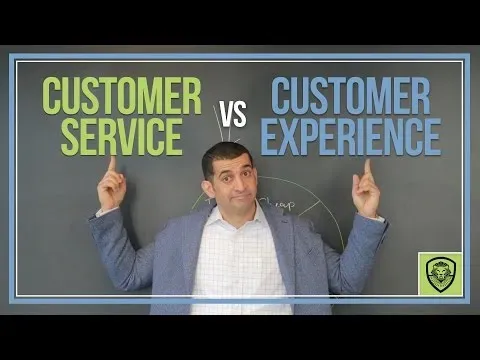30 Related Courses
for YouTube Pharmacology Courses
Autonomic Pharmacology Adrenergic Agonists
This course covers the pharmacology of autonomic agonists, focusing on the effects of adrenergic neurons and receptors on target organs. It examines the effects of alpha 1, alpha 2, beta 1, beta 1 + 2, beta 2, and beta 3 agonists on the body, as well as the clinical applications of these drugs. It also discusses the side effects and contraindications of these drugs.
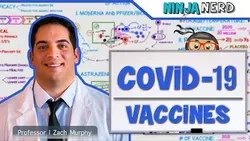
COVID-19 Vaccines: MODERNA PFIZER&BIONTECH ASTRAZENECA
This online course provides an overview of the development phases of the three COVID-19 vaccines: Moderna, Pfizer/BionTech, and AstraZeneca/Oxford. It explains how each vaccine works and the results of the clinical trials. The article also outlines the pre-clinical and Phase I and II trials that were conducted for each vaccine. Finally, it discusses the safety and efficacy of the vaccines.
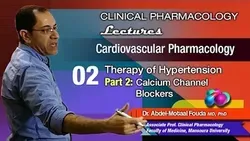
Cardiovascular Pharmacology (Ar) - 02 - Calcium channel blockers
Calcium channel blockers are used to treat various cardiovascular conditions. Verapamil, Nifedipine, and Diltiazem are the most commonly used medications. These drugs can have effects on other organs, and are used to treat hypertension, angina, and arrhythmias. Verapamil is also used to treat migraine headaches, while Nifedipine is used to treat Raynaud's phenomenon. Side effects can include dizziness, headache, and nausea.
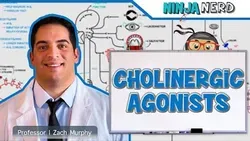
Autonomic Pharmacology Cholinergic Agonists
This course provides an overview of the cholinergic system, including cholinergic receptors and agonists, as well as clinical indications and adverse effects of agonists. It also includes practice problems to help students gain a better understanding of the topic. This course is beneficial for those interested in autonomic pharmacology and the cholinergic system.
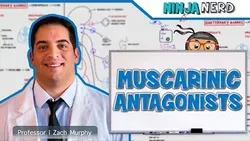
Autonomic Pharmacology Muscarinic Antagonists
This course provides an introduction to muscarinic antagonists, a type of autonomic pharmacology. It covers topics such as cholinergic physiology, types of muscarinic antagonists, anticholinergic toxicity, and practice problems. Students will gain a better understanding of muscarinic antagonists and their applications.
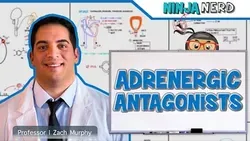
Autonomic Pharmacology Adrenergic Antagonists
This lab introduces students to the pharmacology of autonomic nervous system, specifically focusing on adrenergic antagonists. It covers topics such as adrenergic neurons and receptors, target organ effects, and antagonists for alpha 1, alpha 1 + 2, beta 1 + 2, and beta + alpha receptors. Students will gain an understanding of the various antagonists and their effects on the body.
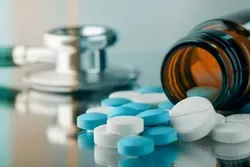
Pharmacology
Gain an introduction to Pharmacology

Pharmacokinetics Drug Absorption
This course covers the fundamentals of pharmacokinetics, specifically drug absorption. It introduces the various routes of administration, mechanisms of absorption, and factors that affect absorption and bioavailability. It also provides practice problems to help students understand the concepts.
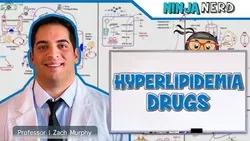
Drugs for Hyperlipidemia
Hyperlipidemia is a condition characterized by elevated levels of lipids in the blood. Treatment of this condition involves the use of drugs such as HMG-CoA reductase inhibitors, niacin, fibrates, bile acid sequestrants, cholesterol absorption inhibitors, and PCSK-9 inhibitors. These drugs work by reducing the production of lipids, increasing their breakdown, and blocking their absorption. By using these drugs, patients can reduce their risk of developing cardiovascular diseases.
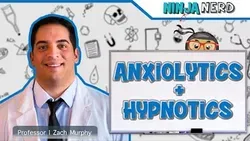
Anxiolytic & Hypnotic Drugs
This course provides an overview of anxiolytic and hypnotic drugs, including their pathophysiology, mechanisms of action, and treatment approaches. It covers the physiology of anxiety and insomnia, as well as the use of anxiolytics and hypnotics to treat these conditions. The course also discusses the advantages and disadvantages of these drugs.
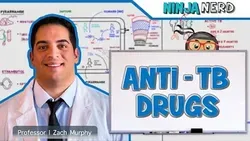
Antimycobacterials Anti-TB Drugs
Antimycobacterials are drugs used to treat tuberculosis and other mycobacterial infections. They work by inhibiting the growth of the bacteria, and are used in combination with other drugs to ensure the most effective treatment. Common adverse effects include nausea, vomiting, and liver damage. Clinical cases are used to demonstrate the effectiveness of antimycobacterials in treating mycobacterial infections.

Drugs for Heart Failure
Heart failure is a serious condition that can be treated with drugs. Beta blockers, RAAS inhibitors, ARNI's, direct vasodilators, diuretics, and ivabradine are all medications used to treat heart failure. These drugs work by reducing the workload of the heart, improving blood flow, and reducing fluid buildup. They can help improve the quality of life for those suffering from heart failure.

Vasopressors: Inodilators Inopressors Pure Vasopressors Methylene Blue Midodrine
Vasopressors are drugs used to increase blood pressure. They can be divided into four categories: Inodilators, Inopressors, Pure Vasopressors, and Methylene Blue. Examples of Inodilators include Dobutamine, Milrinone, and Isoproterenol. Inopressors include Epinephrine, Norepinephrine, and Dopamine. Pure Vasopressors are Phenylephrine, Vasopressin, and Angiotensin-II. Lastly, Methylene Blue is also used as a vasopressor.
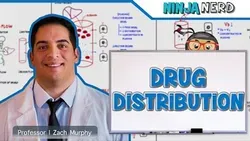
Pharmacokinetics Drug Distribution
This course covers the basics of pharmacokinetics, specifically drug distribution. It introduces the factors that affect distribution, such as protein binding and volume of distribution. It also provides practice problems to help students understand the concepts. This course is beneficial for those looking to gain a better understanding of drug distribution.

Pharmacokinetics Drug Metabolism
This course provides an introduction to the mechanisms of drug metabolism, including Phase I and Phase II biotransformation. It also covers factors that affect drug metabolism and provides practice problems to help students understand the concepts. Students will gain a better understanding of how drugs are metabolized in the body.
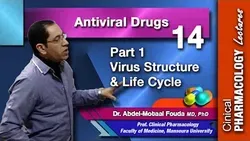
Antiviral Chemotherapy - Part 1: virus structure and life cycle
Antiviral Chemotherapy - Part 1: virus structure and life cycle covers the structure and classification of viruses, their life cycle, and the idea behind nucleoside analogues. It also discusses the mechanistic and clinical classification of antiviral drugs, and their role in viral replication. This course provides an overview of the fundamentals of antiviral chemotherapy.
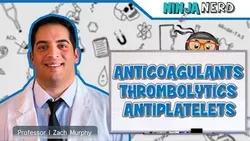
Antiplatelet Anticoagulant Thrombolytic Agents
This course provides an overview of anticoagulants, thrombolytics, and antiplatelets. It covers topics such as platelet plug formation, the coagulation cascade, and fibrinolysis. It also includes a test to assess knowledge of these agents and their mechanisms of action, as well as neurological and cardiac events associated with their use.
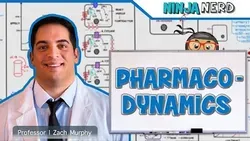
Pharmacodynamics
Pharmacodynamics is the study of how drugs interact with receptors in the body. It covers topics such as types of drug-receptor interactions, dose-response relationships, therapeutic index, and intrinsic activity. It also includes practice problems to help students understand the concepts.
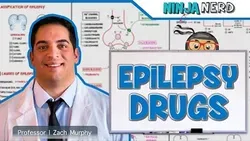
Drugs for Epilepsy
Epilepsy is a neurological disorder that affects the brain's electrical activity. Treatment of epilepsy involves the use of antiepileptic drugs, which work by altering the brain's electrical activity. Common adverse effects of these drugs include drowsiness, dizziness, and confusion. Various drugs are available to treat epilepsy, and the best approach to treatment depends on the individual patient.

Migraine Medications
Migraine medications are used to treat the pathophysiology of migraines. This course covers the mechanism of action and names of migraine medications, as well as potential adverse effects and contraindications. It is important to be aware of the potential risks and benefits of these medications before taking them.
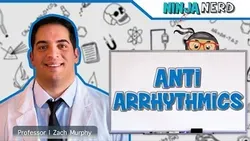
Antiarrhythmic Drugs
This lab introduces students to the different types of antiarrhythmic drugs (AADs) used to treat cardiac arrhythmias. It covers the physiology of the heart, as well as the four main types of AADs: beta blockers, calcium channel blockers, adenosine and digoxin, sodium channel blockers, and potassium channel blockers. Each type is discussed in detail, providing students with a comprehensive understanding of the drugs used to treat arrhythmias.

Antihypertensive Drugs
Antihypertensive drugs are medications used to treat high blood pressure. They include sympatholytics, diuretics, renin-angiotensin-aldosterone inhibitors, vasodilators, and agents for atrial fibrillation. These drugs work to reduce blood pressure and improve overall health.
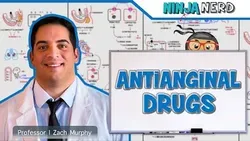
Antianginal Drugs
This course provides an overview of antianginal drugs, including beta blockers, calcium channel blockers, and nitrates. It covers the pathophysiology of angina, as well as treatment algorithms for each drug. It is designed to help healthcare professionals understand the use of these drugs in the management of angina.
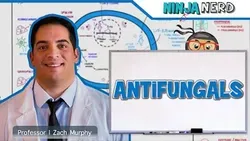
Antifungals
Antifungals are medications used to treat fungal infections. They work by disrupting the cell membrane of the fungus, preventing it from growing and spreading. Clinical use of antifungal medications includes treating a variety of fungal infections, such as athlete's foot, ringworm, and yeast infections. While generally safe, antifungals can cause adverse effects, such as nausea, vomiting, and skin irritation. This course provides an overview of antifungals, including their mechanism of action, clinical use, and potential adverse effects.
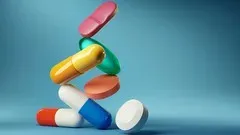
Antibiotics
Discover the fundamentals of Antibiotics
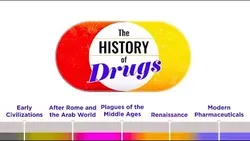
The History of Drugs
Get a comprehensive overview of The History of Drugs
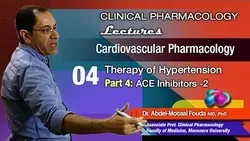
Cardiovascular Pharmacology (Ar) - 04 - ACEIs (Part-2)
Discover the fundamentals of Cardiovascular Pharmacology (Ar) - 04 - ACEIs (Part-2)
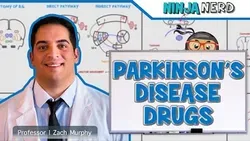
Parkinsons Disease Drugs
Learn the basics of Parkinsons Disease Drugs
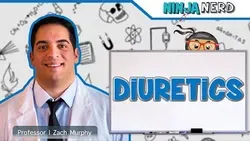
Diuretics
Gain an introduction to Diuretics
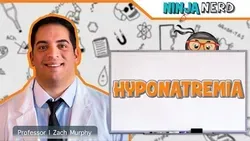
Hyponatremia
Get a comprehensive overview of Hyponatremia

